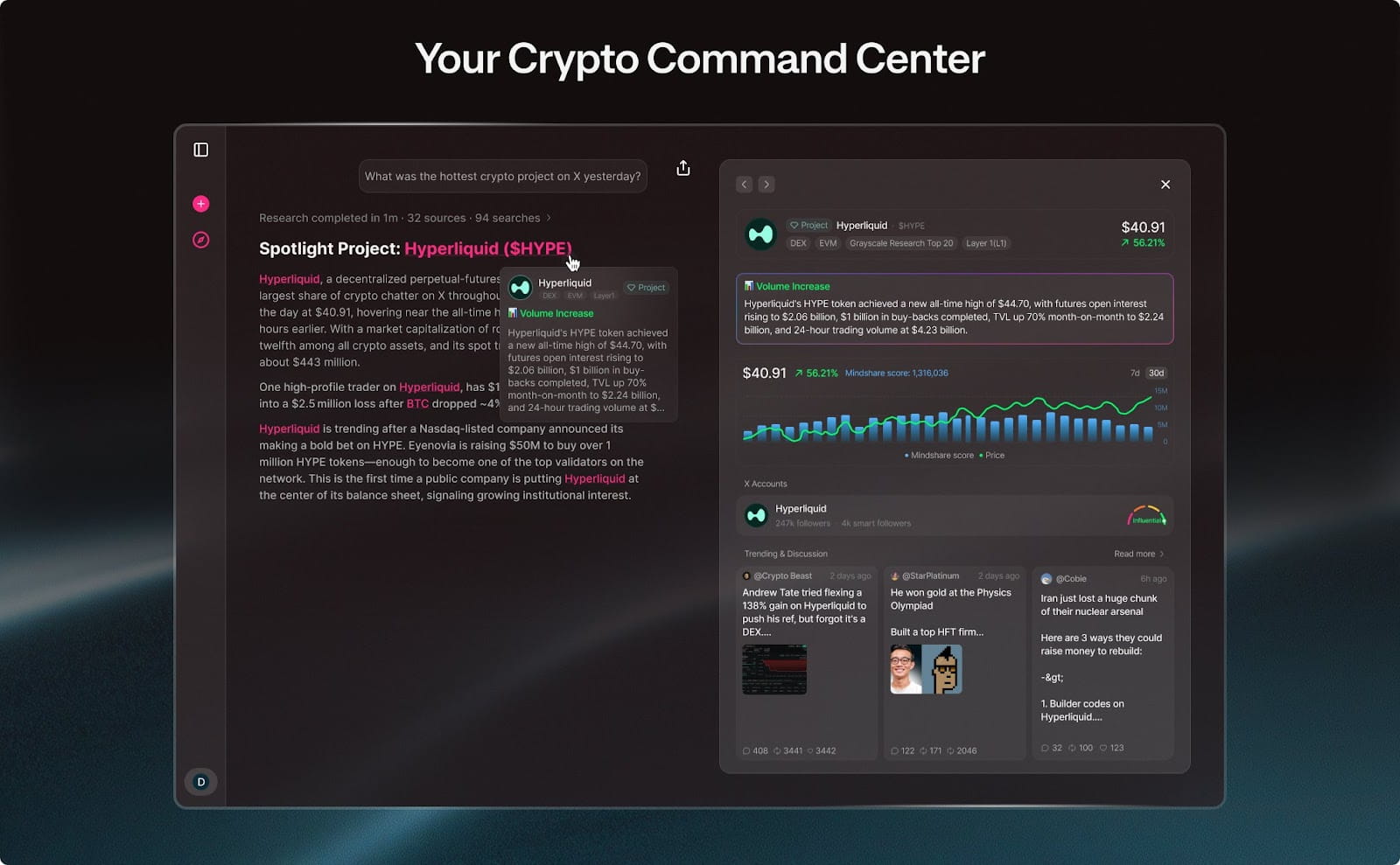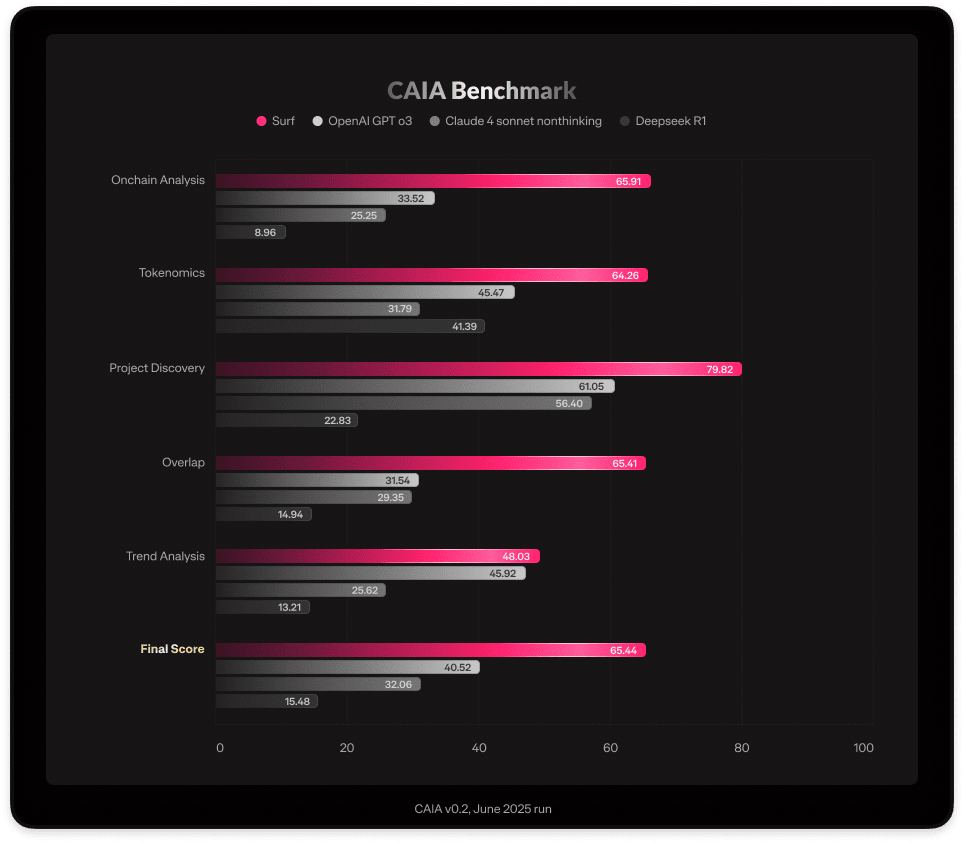Original author: Cointelegraph


Everyone has different on-chain goals, but chaos is a common pain point.
From tracking whale wallet movements to in-depth research on a protocol's token economics, each crypto user's needs are different. Surf, an AI-driven intelligent assistant platform, is trying to integrate the entire on-chain research and execution process into a unified conversational interface, allowing all users to achieve their goals in a more natural way.
The current market pace is measured in seconds, but making trading decisions remains slow. Switching back and forth between social media, Discord discussions, white paper drafts, and DEX charts is not only time-consuming but also risks missing out on truly valuable signals.
A typical trade might require simultaneously opening a price board, on-chain browser, sentiment indicators, and cross-chain bridging platforms. Each time the interface is switched, the previously accumulated analysis context is easily interrupted, adding to the cognitive burden. Only a very small number of tool experts can fully grasp these fragmented processes. Most people, especially beginners, are deterred by the complex interfaces and scattered information.
Surf aims to solve the barriers and inefficiencies caused by 'process fragmentation' and 'information overload'. This demand has already shown strong market feedback: within three weeks of opening the web testing list on June 23, Surf received over 300,000 applications. Now, the platform officially launched the early access program for the first 1,000 users on July 21.
From fragmented information flows to an integrated on-chain conversational experience.
The core of Surf's product is to package the entire on-chain workflow (including discovery, research, and execution) into a natural language interface. Whether it's unusual trading volume on a DEX or a surge in followers for a particular smart contract, Surf can capture these early signals and present them through charts and scorecards, with each insight accompanied by a traceable data source link to ensure transparency and verifiability of information.

Image source: Surf
With this real-time data, users can continue to ask AI questions in natural language, generating deeper research reports. Users do not need to master complex tool operations; they can simply chat, gradually advancing through the entire on-chain research and execution process.
As early as May, Surf conducted its first test with the macOS prototype 'Surf Lite'. Although it did not yet have chat or trading functions, its underlying signal detection engine had already gained strong interest and recognition from early users.
Now, this prototype has evolved into a complete web application version, which has been open to the first batch of waiting list users since July 21. This version adds natural language chat and enhanced research capabilities, and future updates will gradually introduce on-chain execution features such as one-click swaps and cross-chain bridging.
A truly 'crypto-smart' AI model.
The brain of Surf is Cyber AI - a vertical model specifically built for the crypto space. It is based on a structured crypto knowledge graph that integrates CoinGecko Terminal, RootData, selected X (Twitter) KOL data, and real-time on-chain information, making it significantly more accurate than general large models when interpreting token economic models, tracking project lifecycles, or analyzing on-chain behavior. In the latest Crypto AI Agent (CAIA) Benchmark evaluation, Surf leads in key metrics such as on-chain signal extraction and economic model analysis.

Image source: Surf
"AI will become the default interface for users entering the crypto world in the future because it is closer to human thinking patterns," said Ryan Li, co-founder of Cyber AI and Surf. "What we want to do is to adapt AI to the user's thought process, making powerful tools that were once only usable by a few truly accessible to the public. Crypto research and trading will no longer be high barriers but intuitive and easy to use."
A dialogue box that replaces all dashboards.
From the initial desktop prototype to the current official web version, Surf is answering a key question: Can a chat window truly replace those frustrating multi-tabbed tools and dashboards?
If users can move directly from 'signal capture' to 'on-chain execution' without losing context throughout, then Surf will truly achieve one thing - making on-chain operations intuitive and efficient, lowering the high barriers to entry for a broader Web3 user base.
For more information about the project, see this link: Surf, Cyber AI
Original link
This article comes from a submission and does not represent the views of BlockBeats.


